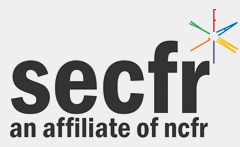Policy Perspectives: Nonprofits and Government Impact on Aging in Place
Proposal Focus
Practice
Presentation Type
Presentation
Abstract
In recent years, tremendous growth in the older adult population has prompted the US Federal government along with state governments to fund programs and organizational structures that can help meet the needs of older adults. Further, organizations such as the National Council on Aging, as well as the American Association of Retired Persons (AARP), and nonprofits such as the United Way also partner in these efforts. This project seeks to analyze the content of American state and federal policy as well as nonprofit programs in order to identify the policy priorities that are currently being supported. Do current policy efforts promote “aging in place” strategies as a way to maintain quality of life and older adult health? An analysis of public policies and nonprofit program structures in the United States since 2000 will help to identify policy priorities that impact aging adults, and will hopefully pave the way to prepare our society for further actions and needs in order to continue to serve them in the next several decades.
Keywords
Aging and Public Policy, Government and Nonprofit Partnerships, Aging in Place
Location
Cornerstone Ballroom Side A
Start Date
12-4-2019 9:15 AM
End Date
12-4-2019 10:00 AM
Policy Perspectives: Nonprofits and Government Impact on Aging in Place
Cornerstone Ballroom Side A
In recent years, tremendous growth in the older adult population has prompted the US Federal government along with state governments to fund programs and organizational structures that can help meet the needs of older adults. Further, organizations such as the National Council on Aging, as well as the American Association of Retired Persons (AARP), and nonprofits such as the United Way also partner in these efforts. This project seeks to analyze the content of American state and federal policy as well as nonprofit programs in order to identify the policy priorities that are currently being supported. Do current policy efforts promote “aging in place” strategies as a way to maintain quality of life and older adult health? An analysis of public policies and nonprofit program structures in the United States since 2000 will help to identify policy priorities that impact aging adults, and will hopefully pave the way to prepare our society for further actions and needs in order to continue to serve them in the next several decades.
![Southeastern Council on Family Relations Conference [2018-2020]](/assets/md5images/a0d3661d5139dc9b769a57be6f085156.png)

